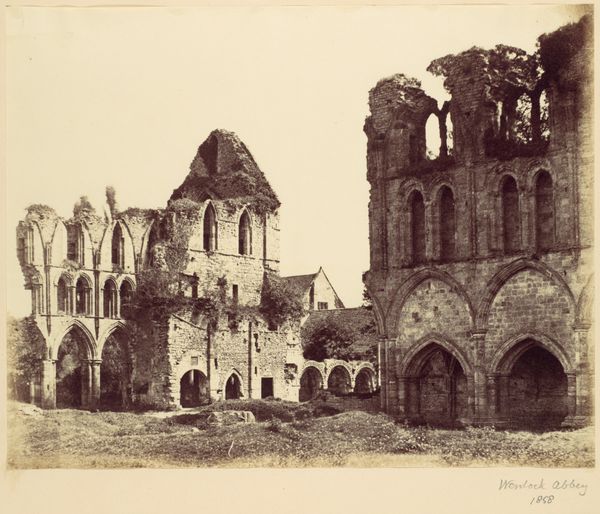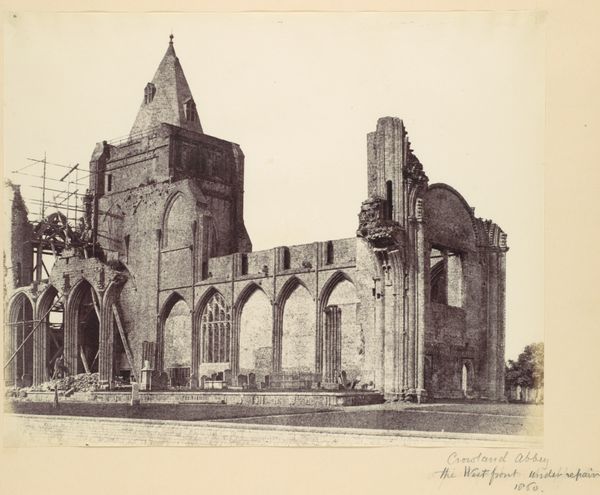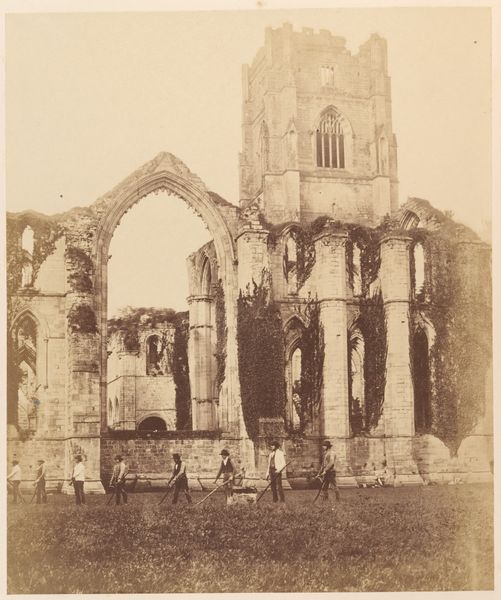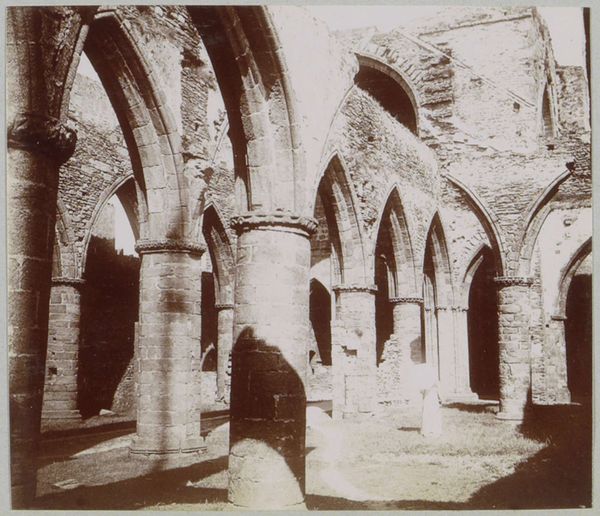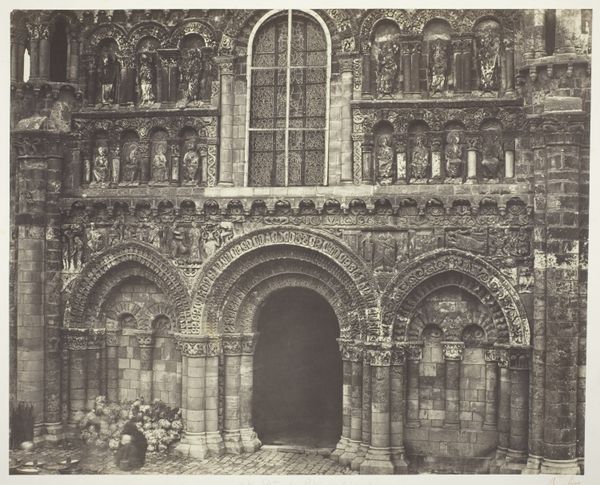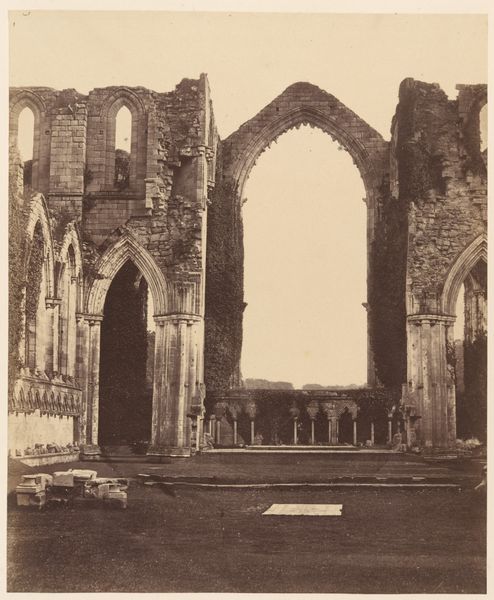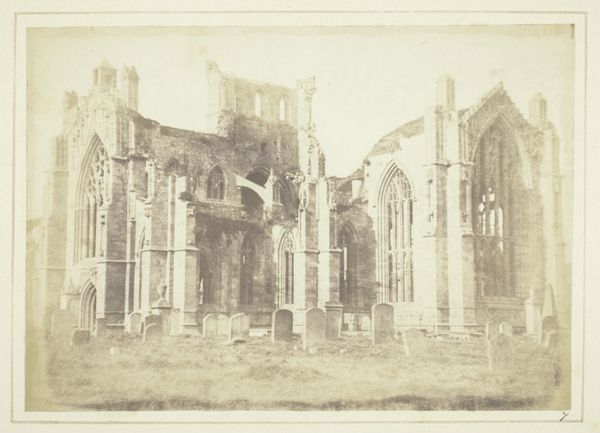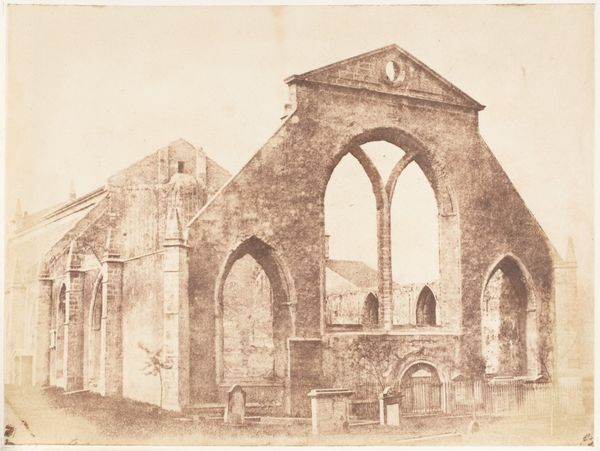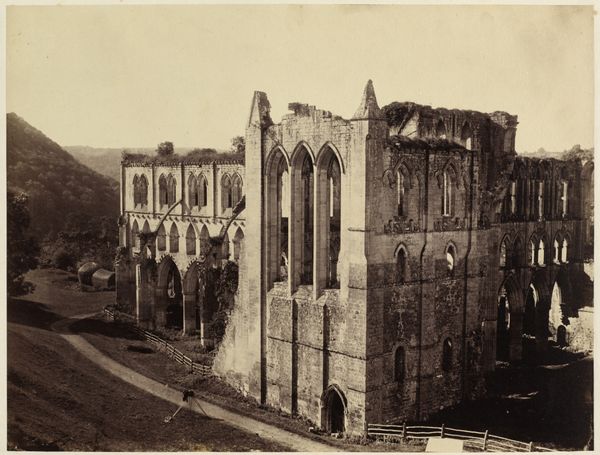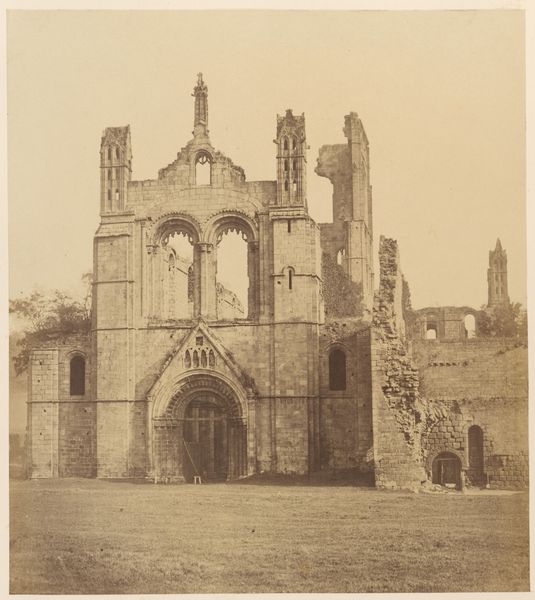
Dimensions: 20.9 x 27.2 cm. (8 1/4 x 10 11/16 in.)
Copyright: Public Domain
Curator: What a wonderfully evocative scene. Alfred Capel Cure captured this gelatin-silver print, titled "Malmesbury", sometime in the 1850s or 60s. It resides here at the Metropolitan Museum. Editor: Immediately, I feel a profound sense of loss, you know? The melancholic gray tones enhance that sensation, while the crumbling architecture feels almost defiant against time, overshadowed with traces of a forgotten social structure. Curator: Yes, Cure, an English amateur photographer, seemed fascinated by ruins, both natural and human-made. His careful arrangement of the scene speaks to a deep understanding of photographic chemistry. Look closely; it seems the angle prioritizes texture, emphasizing stone and mortar. The meticulous darkroom work clearly involved substantial material resources. Editor: Definitely. But considering England's colonial and class structure at the time, I can't help but consider who had the luxury to engage in artistic photography and who built and suffered under this architectural form. The Abbey was originally a Benedictine monastery... an institution inseparable from sociopolitical authority, isn't it? Curator: Precisely! This medium, gelatin-silver, would require particular manufacturing inputs. Thinking of laborers involved—from those mining the silver, those refining the gelatin, to even Cure himself making the print. There is a whole industrial web involved here. Editor: Absolutely. And even more deeply when assessing Romanticism through an intersectional lens, we recognize that fascination with ruins frequently masks a disinterest in the present-day problems and struggles of marginalized communities whose labor upheld such social hierarchies and these monuments within. Curator: It prompts us to interrogate not just aesthetic appreciation, but the socioeconomic structures propping it all up! What we designate art becomes entangled with a complex historical framework. Editor: Right! While admiring its surface aesthetics, we ought to acknowledge the intertwined power dynamics rooted within architecture, labor, and photography themselves, leading to a more inclusive reading overall. Curator: Well put. It seems then, that "Malmesbury" doesn't merely offer a historical scene, it instigates an important discourse on the materiality of art and socioeconomic legacies. Editor: Precisely. And hopefully invites thoughtful viewers to pose new important questions.
Comments
No comments
Be the first to comment and join the conversation on the ultimate creative platform.
